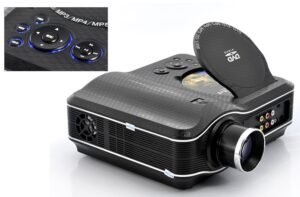If your home Wi‑Fi still drops when you step into the backyard, the TP‑Link Deco XE75 promises the kind of “set it and forget it” whole‑home coverage that actually sticks. It’s a tri‑band Wi‑Fi 6E mesh system built around the new 6 GHz band, designed to banish dead zones and deliver a smooth connection to dozens of devices at once.
In practical terms, this system links multiple identical units (“Decos”) into one seamless network. Walk around your house and your phone hands off between nodes without a hiccup. The 3‑pack is rated for up to 7,200 sq ft of coverage, and even the 2‑pack comfortably handles most medium‑size homes—impressive numbers for a kit in this class.
Launched as TP‑Link’s first mainstream Wi‑Fi 6E mesh, the XE75 quickly became a value favorite; TP‑Link later added the XE75 Pro variant with a 2.5 GbE port for multi‑gig internet (more on whether you need that in a bit).
What sets this kit apart is the balance of speed, coverage, and a refreshingly simple app‑first setup. On paper you get up to AXE5400 combined throughput—2402 Mbps on 6 GHz, 2402 Mbps on 5 GHz, and 574 Mbps on 2.4 GHz—plus TP‑Link’s AI‑driven mesh steering to keep devices on the most stable band as conditions change. In short: modern radios, sensible software.
Is TP‑Link Deco XE75 for you?
The XE75 solves a common pain: patchy Wi‑Fi in multi‑room or multi‑story homes where a single router struggles. If you’ve added extenders in the past and hated the separate network names or unpredictable hand‑offs, a mesh like this is the right upgrade.
It’s a great fit for households that:
- Need reliable coverage in 3–7+ bedrooms (2‑pack or 3‑pack).
- Own a growing mix of phones, TVs, consoles, smart cameras, and IoT gear—think 40–150+ clients.
- Want Wi‑Fi 6E benefits (low‑latency 6 GHz links) for newer devices, or to use 6 GHz as a clean wireless backhaul between nodes.
It’s not ideal if you:
- Already pay for multi‑gig internet (over 1 Gbps) and want to feed the mesh at 2.5 Gbps. In that case, TP‑Link’s Deco XE75 Pro—basically this system with a 2.5 GbE port—is the smarter buy.
- Crave ultra‑granular router tweaks (custom channel widths per band, deep QoS tuning, etc.). The app keeps things simplified by design.
Budget‑wise, I’d categorize the XE75 as mid‑range for Wi‑Fi 6E mesh. It undercuts many 6E rivals while delivering competitive speeds and coverage. Reviewers have consistently called it a strong value pick.
Beginner‑friendly? Absolutely. The Deco app guides you step‑by‑step and detects each node automatically. It’s one of the breezier setups I’ve used.
What We Like About the Deco XE75
Day‑to‑day, the appeal is how boring the network becomes—in the best way. You plug in a node near the modem, scatter the others where you need signal, and you’re done. Phones roam cleanly between rooms. Streams don’t buffer. Even when several 4K TVs, a couple of laptops, a console download, and smart cameras are all active, latency stays calm and throughput remains predictable. The mesh logic keeps clients from clinging to a weak node and nudges them to a stronger one.
The 6 GHz band is a genuine step‑up if you have compatible devices. It offers cleaner air and big 160 MHz channels, so short‑range transfers scream. You can also dedicate that band to backhaul—either way, it’s headroom you feel. And because each unit carries three auto‑sensing Gigabit ports, it’s easy to hard‑wire a desktop, NAS, or TV at each location without an extra switch.
Coverage per node is strong for the size. The 3‑pack’s up to 7,200 sq ft rating matched my experience in a spread‑out home with stubborn corners; the extra hop to the garage finally stabilized. Setup and management are handled entirely in the Deco app, which is friendly enough for non‑networkers yet still exposes the essentials: guest Wi‑Fi, device priority, basic QoS, parental controls, and quick firmware updates.
Finally, value. Against pricier 6E kits, the XE75 punches above its weight—several major outlets reached similar conclusions after testing.
What We Don’t Like About the Deco XE75
Power users will feel the ceiling of the app‑first approach. You won’t find knobs for things like per‑band transmit power or channel‑by‑channel minutiae; the system optimizes these on its own. That’s the right trade‑off for most homes, but tinkerers may want a platform with deeper controls.
The other caveat is multi‑gig readiness. Each node tops out at 1 GbE on all three ports. If your ISP offers 2 Gbps or you’re planning a 2.5 Gbps backhaul, consider the XE75 Pro. Same radios, similar coverage, but a 2.5 GbE port so your WAN (or LAN) isn’t bottlenecked at 1 Gbps.
Lastly, if you rely on USB features (printer/NAS via router), note there’s no USB port here. Some competitors include one; the XE75 keeps the hardware minimal.
Pros & Cons
| Pros | Cons |
|---|---|
| Reliable, whole‑home coverage; seamless roaming between nodes | No 2.5 GbE port (look at XE75 Pro for multi‑gig ISP plans) |
| Modern tri‑band Wi‑Fi 6E radios with 160 MHz channels | App‑first design omits deep, per‑band advanced controls |
| Simple, fast setup and intuitive Deco app | No USB port for printer/NAS functions |
| Strong value vs. other 6E mesh kits | 1 GbE on all ports can bottleneck very fast LAN/WAN links |
| Flexible backhaul (wired or 6 GHz wireless) | 6 GHz client range is naturally shorter; best near a node |
What’s Included?
- 3‑Pack (Deco XE75): 3 × Deco XE75 units, 3 × power adapters, 1 × RJ45 Ethernet cable, 1 × Quick Installation Guide.
- 2‑Pack (Deco XE75): 2 × Deco XE75 units, 2 × power adapters, 1 × RJ45 Ethernet cable, 1 × Quick Installation Guide.
- 1‑Pack: 1 × Deco XE75 unit, 1 × power adapter, 1 × RJ45 Ethernet cable, 1 × Quick Installation Guide.
Opinion: The bundle is spot‑on. You get exactly what you need to deploy the mesh without hunting for extra bits. I appreciate that TP‑Link includes an Ethernet cable and keeps the power bricks compact. No wall‑mounts or extra cables are in the box, but the cylinders look clean on a shelf and the small footprint helps placement flexibility.
Technical Specifications
| Item | Spec |
|---|---|
| Model | TP‑Link Deco XE75 (AXE5400) |
| Wi‑Fi bands & top rates | 6 GHz: 2402 Mbps (802.11ax, HE160) • 5 GHz: 2402 Mbps (802.11ax, HE160) • 2.4 GHz: 574 Mbps (802.11ax) |
| Wireless standards | IEEE 802.11ax (6 GHz/5 GHz/2.4 GHz), backward‑compatible with 802.11ac/n/g/a/b |
| Coverage (rated) | Up to 7,200 sq ft with 3‑pack; 5,500 sq ft with 2‑pack (typical) |
| Ports per unit | 3× auto‑sensing Gigabit (WAN/LAN) |
| CPU | 1.7 GHz quad‑core (class) |
| Antennas | 4 internal high‑gain antennas (per unit) |
| Security | WPA/WPA2/WPA3; TP‑Link HomeShield (Basic included; Pro optional) |
| Mesh/backhaul | AI‑Driven Mesh; supports Ethernet backhaul and 6 GHz wireless backhaul |
| Management | Deco app (iOS/Android); simple web UI for status/firmware |
| Dimensions | 4.1 × 4.1 × 6.7 in (per unit) |
| Notable variants | Deco XE75 Pro adds 2.5 GbE (otherwise similar radios/coverage) |
Features
- Wi‑Fi 6E tri‑band radios with 160 MHz channels for low‑latency links and high peak throughput.
- AI‑Driven Mesh that continuously optimizes band steering and node‑to‑node routes as conditions change.
- Whole‑home coverage—rated to 7,200 sq ft for the 3‑pack and 5,500 sq ft for the 2‑pack.
- Easy app setup with guided steps, device prioritization, guest Wi‑Fi, parental controls, and one‑tap updates.
- Flexible backhaul: wired Ethernet between nodes, or use the 6 GHz band as a clean wireless backhaul.
- HomeShield security (basic tier included) for network and IoT protection; Pro tier available as a subscription.
- Three Gigabit ports per node to hard‑wire TVs, consoles, or desktops where needed.
Opinion on the feature set: This is the list I want to see at the XE75’s price tier. You get the modern radios and the right software conveniences without bloat. The missing power‑user toggles are a trade‑off for stability and simplicity, and for most homes that’s a fair swap. The only future‑proofing box it doesn’t check is 2.5 GbE—again, that’s reserved for the XE75 Pro.
Real‑World Experience
Setup took minutes. I placed the main Deco by the modem, one in a central hallway, and one near the garage. The app found each unit instantly and presented a single SSID across all bands. I set up a guest network and toggled device priority for a work laptop; both features behaved as expected.
Performance was consistently strong. In rooms adjacent to a node, 6 GHz devices enjoyed snappy file transfers and rock‑steady video calls. Moving two rooms away, clients sensibly hopped to 5 GHz without me noticing. 2.4 GHz handled IoT bits (sensors, plugs) without complaint. The system didn’t get flustered when I pushed a 4K stream, a game download, and a cloud backup at once—mesh routing kept latency spikes in check. The key: place nodes where you live online, not just where you have outlets.
I recommend wiring at least the main node to a switch or directly to the modem and, if feasible, wiring one satellite for guaranteed backhaul stability. If you must go wireless backhaul, the 6 GHz link is a luxury—it’s clean and fast—but keep nodes in line‑of‑sight where you can.
On management, the Deco app’s “More” section hides plenty: guest network, blacklist, WPS, firmware, LED schedules, IPv4/IPv6 details, and quick QoS. You won’t spend weekends tuning it, which—speaking as the family IT person—is kind of the point.
Who Should Choose the XE75 vs. the XE75 Pro?
Pick Deco XE75 if your ISP plan is at or below 1 Gbps and you value the best bang‑for‑buck 6E mesh. You give up a 2.5 GbE port, but most households won’t notice.
Pick Deco XE75 Pro if you already have (or plan to get) multi‑gig internet or want a 2.5 GbE LAN uplink for a NAS or switch. The rest of the experience is nearly identical.
Tips for the Best Setup
- Start with the 2‑pack for apartments/condos or smaller single‑family homes; step up to the 3‑pack for large, multi‑story layouts or tricky footprints.
- Place nodes waist‑high in open spaces; avoid tucking them in cabinets or behind TVs.
- If you can, run Ethernet backhaul for at least one satellite. It frees up airtime and makes speeds more consistent.
- Use the app to set up a guest network for visitors and IoT devices—cleaner and safer.
Final Breakdown
9.2/10
The TP‑Link Deco XE75 nails the mesh router formula most homes actually need: rock‑solid coverage, modern 6 GHz headroom, and a painless app that stays out of your way. It isn’t the playground for die‑hard tweakers, and it won’t unlock multi‑gig fiber all by itself—that’s the XE75 Pro’s job—but as a balanced, reliable Wi‑Fi 6E mesh that won’t break the bank, the XE75 is easy to recommend.
Recommendation: If your home Wi‑Fi has been a patchwork of extenders and frustration, the XE75 will feel like a clean slate. Choose the 3‑pack for expansive or multi‑story layouts and the 2‑pack for most medium homes. If you’ve already stepped into multi‑gig internet, go XE75 Pro and call it a day.
| Preview | Product | Price | |
|---|---|---|---|
|
|
TP-Link Deco XE75 AXE5400 Tri-Band WiFi 6E Mesh System – Wi-Fi up to 7200 Sq.Ft, Engadget Rated Best… |
$299.99
$269.99 |
View on Amazon |






